Culling and Fry Selection to Maintain A Linebred Strain Veiltail and Broadtail Moor Goldfish (3/3)
by David Linnemeyer& David Schleser
(no part may be published without permission of authors)
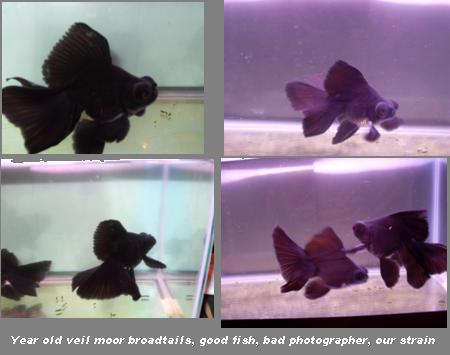
Culling relating specifically to Broadtail Moors
1.Eyes- Wait until the fish are 4 months of age to cull for eyes. We cull from the top and side, mostly from the top. First I cull all fish whose eyes do not match each other. Culling for eyes will be a continuous process over the next months. There are many eye shapes that fall under the category of telescope eyes. The telescope eye of the broadtail moor should be spherical, (round) and large. A common failing of today’s broadtail moors is that in order to compete on the bench where the caudal is given more emphasis, the size of the eyes has been sacrificed for a more square tail. My personal opinion is that large telescope eyes give the broadtail moor its “Type”. So when culling 4-6 month old fish, we will accept a small indentation or fork in the tail in an otherwise superior fish, (eyes, color).
2.Color- Obviously as dark as possible At a month of age I we will be able to differentiate between depth of color in the young fish we are culling. Be somewhat careful. If we otherwise have a great young fish except for depth of color, we will hold on to that fish until we see how many keepers we end up with. Remember, color is easier to improve than body structure and other characteristics.
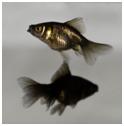
Two young moors, cull the top lighter fish
3.Retaining Color- If we define culling as going all the way to breeder selection and beyond in a strain, we will want to remove from the breeding program those fish which later change from black to red, white and red and white. Most moors that will turn color start to do so by 2 years of age. Therefore, unless it’s absolutely imperative to use a yearling fish for breeding we like to use breeders that are at least 2 years old.It should be also noted that goldfish virtually never color to their potential when raised inside. Moors, in particular, tend to never achieve a good black color and calicos can look washed out. Sadly, even if these fish are moved into a sunny outdoor pond after the age that the coloring process kicks in, they still never develop coloration matching their genetic potential. If you spawn your fish indoors to get a jump on the breeding season we strongly advise that promising young are moved outdoors no later than 4 weeks of age.
Following are several pictures of moor and calico veil fry with various defects and attributes:
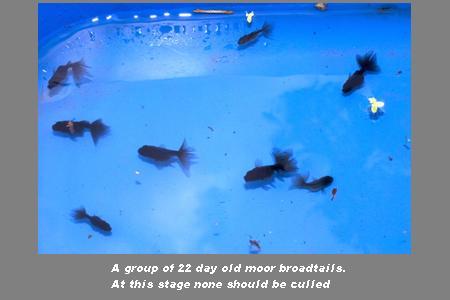
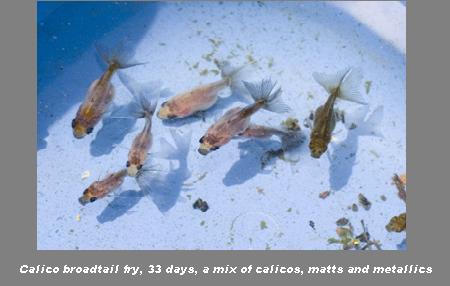
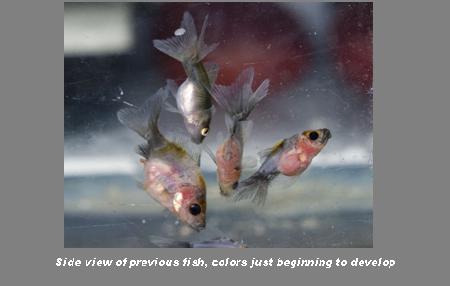
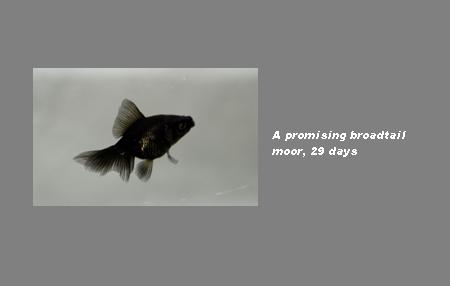
Summary: This article has covered the knowledge we have gained over the years line breeding two strains of goldfish. We have no secrets, we only learn when we share our experience with each other.
Everyone’s setup and overall system for producing quality fish is different. There is no one set way of doing things. If you are producing quality fish, all is well though none of us are ever or should be satisfied. If we produce a half dozen top quality fish from several hundred in a season we are happy. If quality fish are not being produced, (water, food, genetics), might need to be changed or modified.
Just when we think we have the answers a new spawn occurs that throws all previous knowledge into a state of confusion. This is the challenge and what makes the hobby so interesting and fun.
Previous Page





